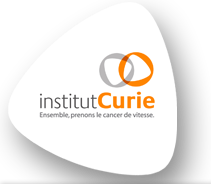Early metabolic response of breast cancer to neoadjuvant endocrine therapy: Comparison to morphological and pathological response
Résumé
Background: Neoadjuvant endocrine therapy (NET) has shown efficacy in terms of clinical response and surgical outcome in postmenopausal patients with estrogen receptor-positive / HER2-negative breast cancer (ER+/HER2- BC) but monitoring of tumor response is challenging. The aim of the present study was to investigate the value of an early metabolic response compared to morphological and pathological responses in this population. Methods: This was an ancillary study of CARMINA 02, a phase II clinical trial evaluating side-by-side the efficacy of 4 to 6 months of anastrozole or fulvestrant. Positron Emission Tomography/Computed Tomography using 2-deoxy-2-[18F]fluoro-D-glucose (FDG-PET/CT) scans were performed at baseline (M0), early after 1 month of treatment (M1) and pre-operatively in 11 patients (74.2 yo ± 3.6). Patients were classified as early "metabolic responders" (mR) when the decrease of SUVmax was higher than 40%, and "metabolic non-responders" (mNR) otherwise. Early metabolic response was compared to morphological response (palpation, US and MRI), variation of Ki-67 index, pathological response according to the Sataloff classification and also to Preoperative Endocrine Prognostic Index (PEPI) score. It was also correlated with overall survival (OS) and recurrence-free survival (RFS). Results: Tumor size measured on US and on MRI was smaller in mR than mNR, with the highest statistically significant difference at M1 (p = 0.01 and 7.1 × 10- 5, respectively). No statistically significant difference in the variation of tumor size between M0 and M1 assessed on US or MRI was observed between mR and mNR. mR had a better clinical response: no progressive disease in mR vs 2 in mNR and 2 partial response in mR vs 1 partial response in mNR. One patient with a pre-operative complete metabolic response had the best pathological response. Pathological response did not show any statistically significant difference between mR and mNR. mR had better OS and RFS (Kaplan-Meier p = 0.08 and 0.06, respectively). All cancer-related events occurred in mNR: 3 patients died, 2 of them from progressive disease. Conclusions: FDG-PET/CT imaging could become a "surrogate marker" to monitor tumor response, especially as NET is a valuable treatment option in postmenopausal women with ER+/HER2- BC.
Origine : Fichiers éditeurs autorisés sur une archive ouverte
licence : CC BY - Paternité
licence : CC BY - Paternité
